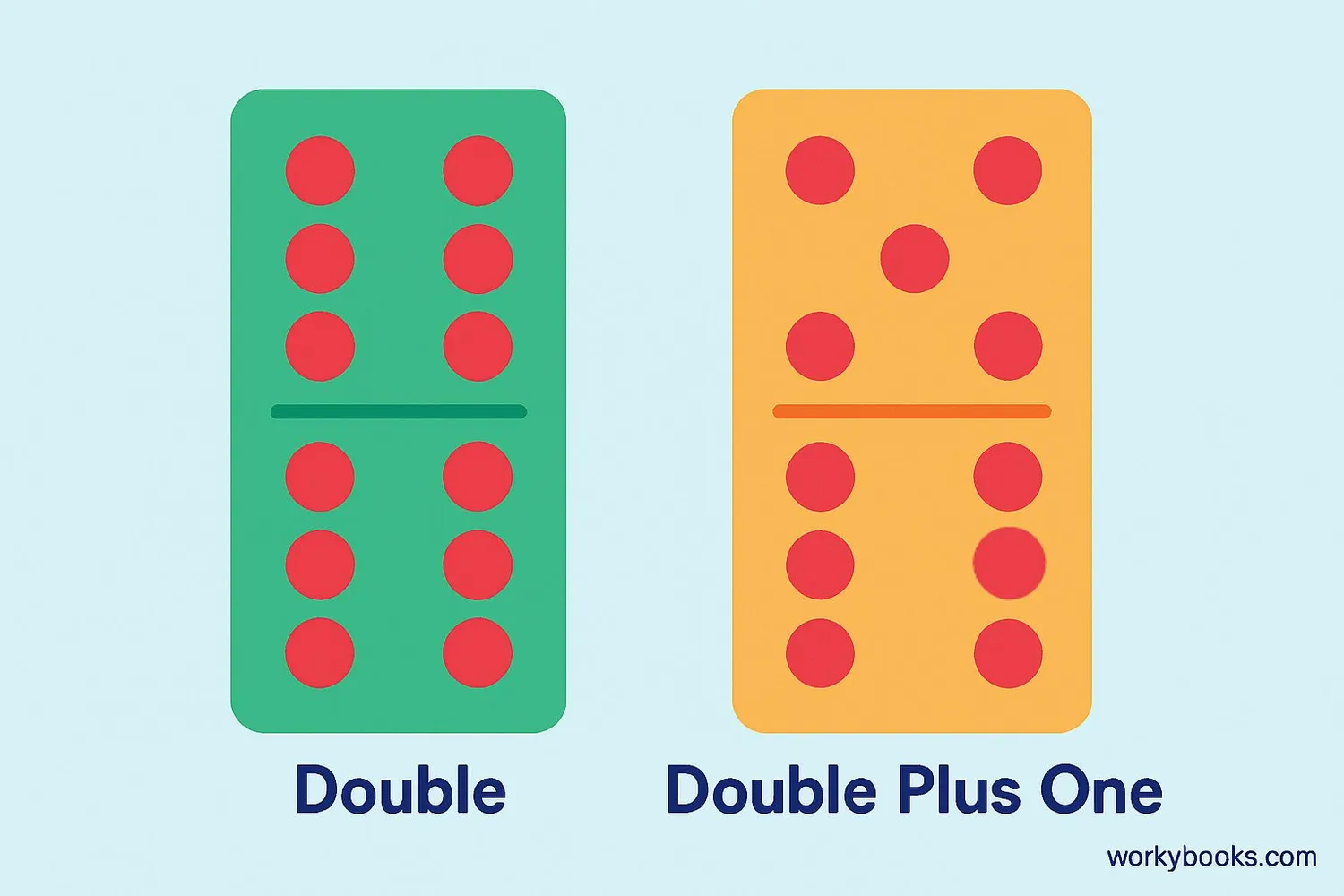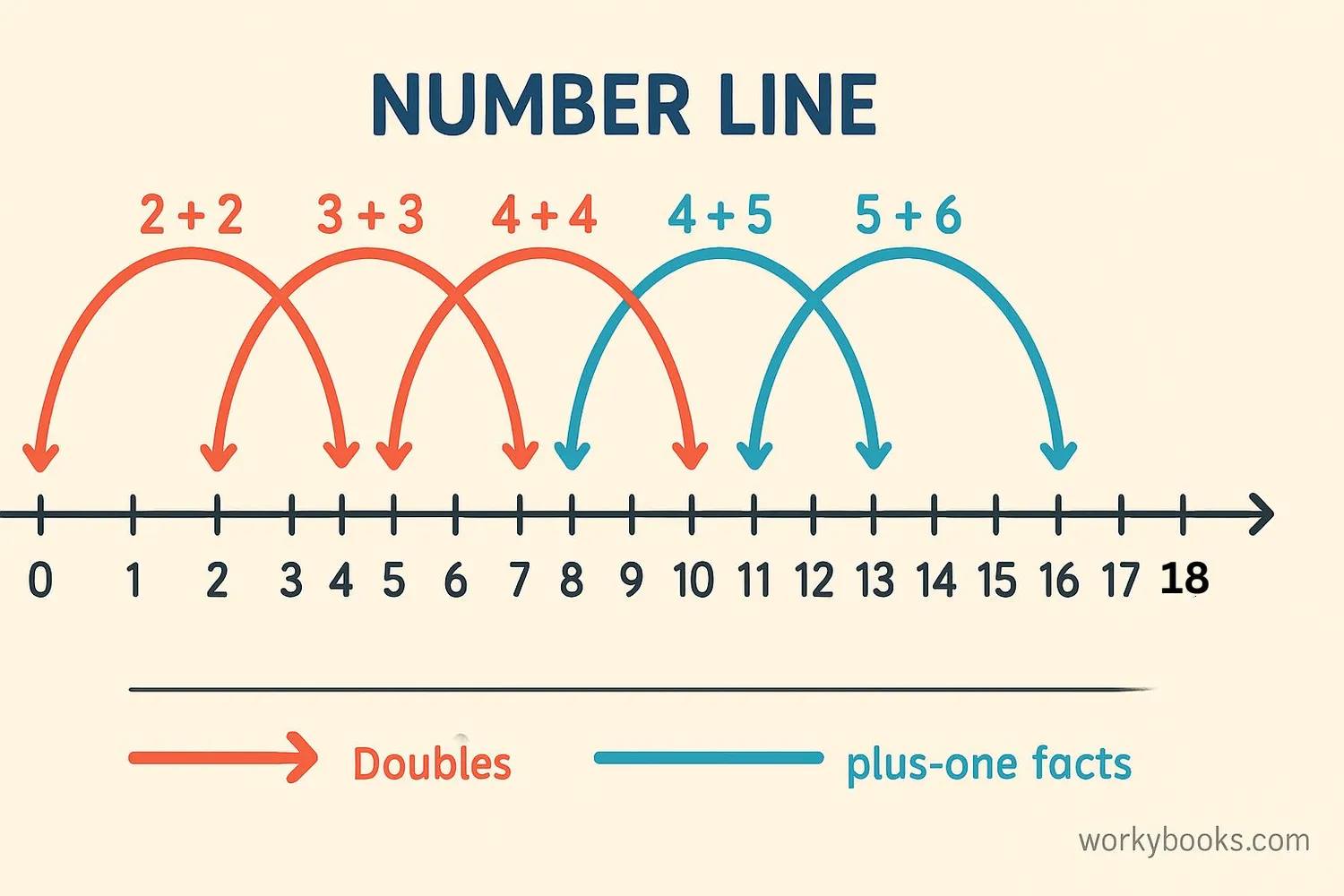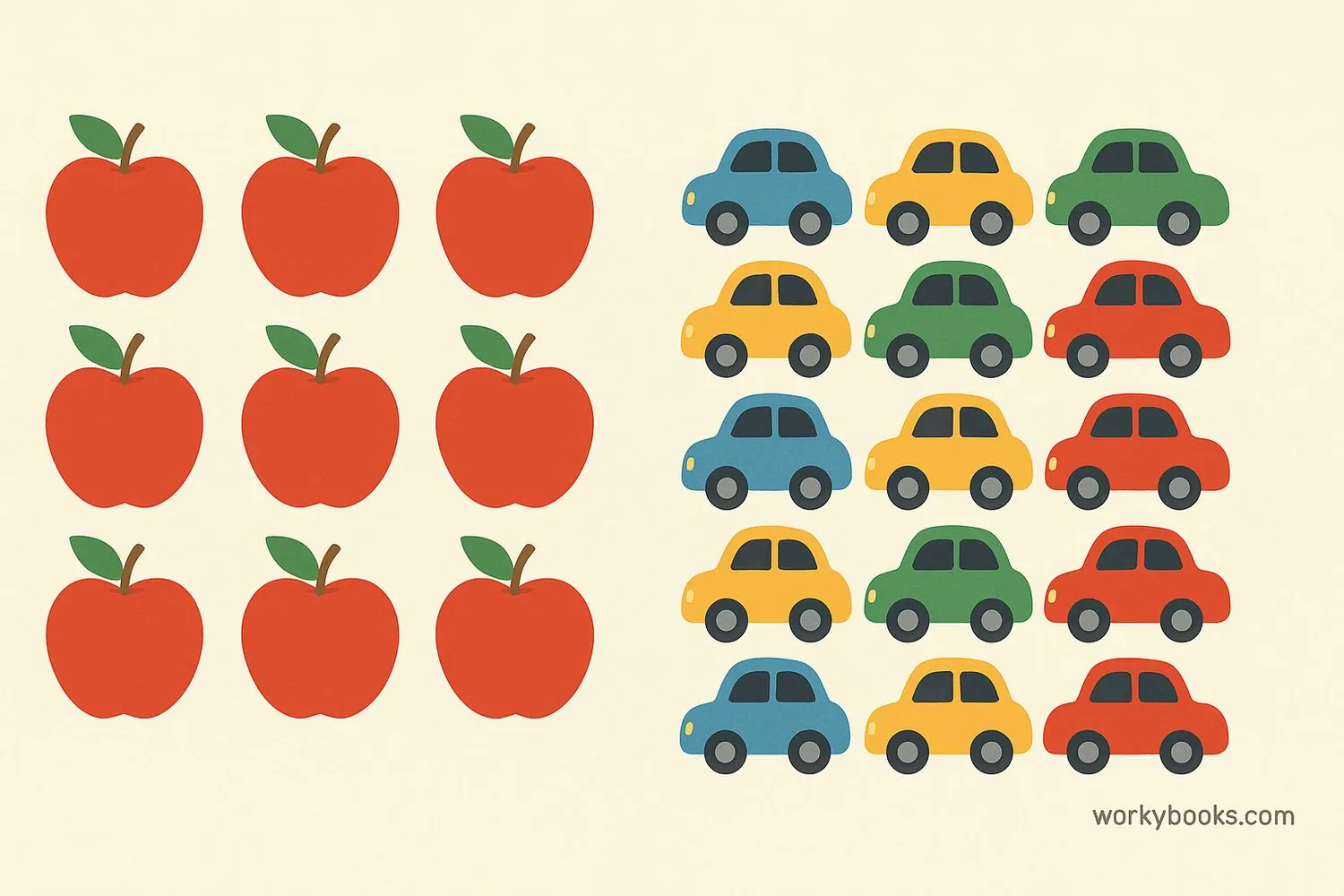Doubles Plus - Definition, Examples, Quiz, FAQ, Trivia
Master addition with this clever math strategy using doubles facts
What is Doubles Plus One?

Doubles Plus One is a math strategy that helps you solve addition problems quickly by using what you already know about doubles facts.
A doubles fact is when you add the same number to itself. For example:
3 + 3 = 6
The doubles plus one strategy is when you add two numbers that are next to each other on the number line. For example, 4 + 5 is the same as 4 + 4 + 1. Since you know that 4 + 4 = 8, you can just add one more to get 9!
This strategy is helpful because it builds on facts you already know, making addition faster and easier.
Key Concept
Doubles Plus One = Double the smaller number + 1
How to Use Doubles Plus One

Using the doubles plus one strategy is simple when you follow these steps:
Strategy Steps
2. Double it
3. Add one
Example: Solve 7 + 8 using doubles plus one
Step 1: The smaller number is 7
Step 2: Double 7 → 7 + 7 = 14
Step 3: Add one → 14 + 1 = 15
So 7 + 8 = 15. Notice that 7 and 8 are consecutive numbers (next to each other on the number line).
Remember
This strategy works best when the two numbers you're adding are consecutive (like 3 and 4, 6 and 7, or 9 and 10).
Doubles Plus One Facts

Here are some important facts about doubles plus one:
Patterns: All doubles plus one facts are odd numbers! That's because when you add two consecutive numbers, the answer is always odd.
Connection to Doubles: Every doubles plus one fact is just one more than a doubles fact. For example, 5+6 is one more than 5+5.
Relationship to Near Doubles: Doubles plus one is a special type of near doubles strategy. You can also use doubles plus two, but doubles plus one is the most common.
Here's a chart of common doubles plus one facts:
| Smaller Number | Double | Double Plus One | Fact |
|---|---|---|---|
| 1 | 1+1=2 | 2+1=3 | 1+2=3 |
| 2 | 2+2=4 | 4+1=5 | 2+3=5 |
| 3 | 3+3=6 | 6+1=7 | 3+4=7 |
| 4 | 4+4=8 | 8+1=9 | 4+5=9 |
| 5 | 5+5=10 | 10+1=11 | 5+6=11 |
| 6 | 6+6=12 | 12+1=13 | 6+7=13 |
| 7 | 7+7=14 | 14+1=15 | 7+8=15 |
| 8 | 8+8=16 | 16+1=17 | 8+9=17 |
| 9 | 9+9=18 | 18+1=19 | 9+10=19 |
| 10 | 10+10=20 | 20+1=21 | 10+11=21 |
Pattern Tip
Notice that the answers follow the odd numbers: 3, 5, 7, 9, 11, 13, 15, 17, 19, 21!
Doubles Plus One Examples

Let's practice with more examples:
Example 1: 3 + 4
Step 1: The smaller number is 3
Step 2: Double 3 → 3 + 3 = 6
Step 3: Add one → 6 + 1 = 7
Answer: 3 + 4 = 7
Example 2: 6 + 7
Step 1: The smaller number is 6
Step 2: Double 6 → 6 + 6 = 12
Step 3: Add one → 12 + 1 = 13
Answer: 6 + 7 = 13
Example 3: 8 + 9
Step 1: The smaller number is 8
Step 2: Double 8 → 8 + 8 = 16
Step 3: Add one → 16 + 1 = 17
Answer: 8 + 9 = 17
Example 4: 0 + 1
Step 1: The smaller number is 0
Step 2: Double 0 → 0 + 0 = 0
Step 3: Add one → 0 + 1 = 1
Answer: 0 + 1 = 1
Try solving these using doubles plus one: 5+6, 2+3, 9+10, and 4+5!
Practice Tip
Make flashcards with doubles plus one facts to help memorize them quickly!
Doubles Plus One Quiz
Test your understanding with this 5-question quiz. Choose the correct answer for each question.
Frequently Asked Questions
Here are answers to common questions about doubles plus one:
Math Strategy Trivia
Discover interesting facts about math strategies:
Ancient Addition
Ancient Egyptians used a doubling method for multiplication as early as 2000 BC. They would repeatedly double numbers to solve complex problems, similar to how we use doubles strategies today!
Brain Power
Research shows that using mental math strategies like doubles plus one strengthens neural pathways in the brain. Children who master these strategies early often develop stronger number sense and problem-solving skills.
Math Games
Many popular math games like "Shut the Box" and "Shisima" use doubles strategies. These traditional games help children practice math facts in a fun, engaging way without worksheets.
Pattern Power
Notice that all doubles plus one sums are odd numbers? This pattern continues forever! 100+101=201, 1000+1001=2001 - always odd because you're adding two consecutive numbers.





